Features
FIND NEW GAMES
Browse through games, read game reviews, and learn about new and upcoming games.
RATE AND REVIEW
Rate games using our unique happiness scale, voice your opinions, build up your profile.
PLAY
THE GAME
Complete quests, earn rewards, and master your skills to level-up and prove your expertise.
HELP OTHER
GAMERS
Write tips, strategies and house rules to help others take their game to a new level.
If your group gets pummelled with curses and find they’re losing more often than not….instead of using all 13 tiles as the instructions suggest, only use half with half original tiles. Or any combination, that maintains both challenge and fun. So long as you have the 13 tile total.
Simple poker chips work great for life markers. I already had some old ones lying around. Different Color’s make it easy.
This rule is a must when playing with expansions, but you can use it with the base as well. With expansions, as stated in the Millionaire’s Row rule book, you shuffle the supply cards and deal 10 cards out randomly (no duplicates) and that will be your marketplace. Seeing as there isn’t a huge variety of supply cards in just the base game, you can drop the number of cards in the marketplace to 5. This will save room on the table (and force some of those people who buy all of the same card to venture out of their comfort zone).
Poker chips are a far superior option then the paper bills. This has been said on other forums but at least a nice number of 4 different colors will work a lot better than the paper money. It’s easier to count your opponents money too as long as you can remember the denominations.
For easier set up and tear down we put a player’s set of colored cubes and all houses and huts in a single baggie. So each player will have all their tokens after opening box.
This is my all time favourite game.
Simple (relatively) but still strategic.
Historical
Just plain fun
Plenty of online support for the game – so more scenarios than you have time to play.
hi, can it be played only on the ipad or can it be played on pc too?
Phenomenal tug-o-war style game that utilizes multi use cards in a fantastic way. Highly balanced game play and highly thematic.
Cqn u even play any of the games on this website??? I only came to this website cuz the card wars game was removed from iOS…
@sp
Hey bro, since this chat is dead I’m just wondering. Do you still have your copie of quantum and are you willing to sell it
Recent News Posts
- 03The Lord of the Rings: The Card Game
- 02The Voyages of Marco Polo
- 250Through the Ages: A New Story of Civilization
- 00King of Tokyo: Halloween
- 01The Hobbit: On the Doorstep – Saga Expansion
- 01BattleTech
- 01Dungeon Lords
- 01Survive: Escape from Atlantis!
- 01Thebes
- 01Port Royal
- (updated once every hour)
- Check out our users' favorite games!
- (152) 7 Wonders
- (149) Dominion
- (144) Pandemic
- (135) The Settlers of Catan
- (120) Carcassonne
- (115) Ticket to Ride
- (97) Small World
- (96) Munchkin
- (92) Arkham Horror
- (91) Forbidden Island
- (# of user reviews, updated every 12 hours)
- 25 Through the Ages: A New Story of Civilization
- (# of hearts given, updated every hour)
- 5 The Voyages of Marco Polo
- 3 Mansions of Madness (1st ed)
- 3 The Lord of the Rings: The Card Game
- 2 Dungeon Lords
- 2 BattleTech
- 2 Love Letter
- 1 Arkham Horror
- 1 Peloponnes (4th ed)
- 1 Arkham Horror: Innsmouth Horror
- 1 Arkham Horror: Miskatonic Horror
- (# of times played, updated every 12 hours)
Log in to subscribe to our newsletter, or subscribe via Feedburner to get immediate updates.
- see all new games >
-
Hasty Baker
19-Aug-24, GoChuckle -
Mythic Quests: The Card Game
7-Nov-22, BoardGaming.com -
Mythic Dungeon Crawler – A Solo Card Game
27-Sep-22, BoardGaming.com -
Lost Ruins of Arnak
28-Dec-21, Czech Games Edition -
13 Monsters
4-Dec-20, Twisted Stranger B.V. -
Forgotten Waters
4-Dec-20, Plaid Hat Games -
Pathfinder Adventure Card Game: Core Set
18-Nov-20, Paizo Publishing -
Unlocking Insanity
5-Oct-20, Petersen Games -
Planet Apocalypse
5-Oct-20, Petersen Games -
Marvel United
1-Oct-20, CMON, Spin Master Ltd. -
Draconis Invasion: Wrath
23-Sep-20, -
2 Minute Dino Deal
5-Aug-20, Petersen Games -
Mythic Challenge: The Card Game
2-Aug-20, BoardGaming.com -
Viscounts of the West Kingdom
27-Mar-20, Garphill Games -
Glamazons
14-Feb-20, Prettiest Princess - see all new games >
- see all upcoming games >
-
Gravity Warfare
2018 Q4, Smart Iguana Games -
BANG! The Dice Game – Undead or Alive
2019, dV Giochi -
Hasty Baker
2019, GoChuckle -
Penguinramids
2019 Q4, dV Giochi -
Origami: Legends
2019 Q4, dV Giochi -
Decktective: Bloody-red roses
2019 Q4, dV Giochi -
BANG! The Duel: Renegades
2019 Q4, dV Giochi -
Buy It Or Don’t
2019 Q4, Binks Games -
Four Levels
2019 Q4, Four Level Productions -
Unlocking Insanity
2020, Petersen Games -
High Noon
2020 Q4, High Noon Inc. -
Quantified
2021, Quality Beast -
High Frontier 4 All (4th ed)
2021 Q2, Ion Game Design, Sierra Madre Games -
Legends of Sleepy Hollow
2021 Q2, Dice Hate Me Games -
Game of Energy
2021 Q2, Ninex Games - see all upcoming games >

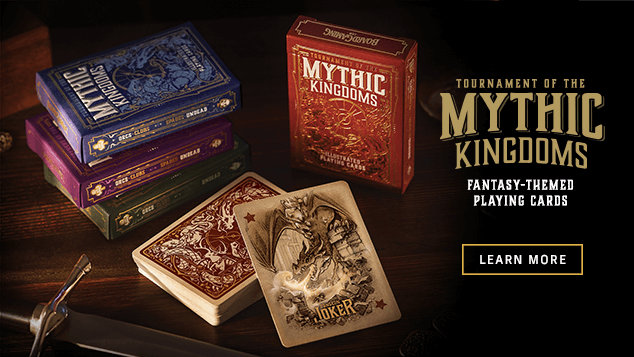


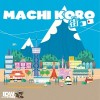

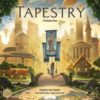

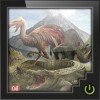
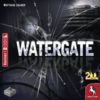






Sexy Womans in your city
Last Will is a delightful blend of strategy and chaos, where the objective isn’t to amass wealth but to shed it as quickly as possible. Gather your friends (3-4 players) for a hilarious romp through financial mismanagement in this engaging board game.
The beauty of Last Will lies in its simplicity yet depth. While the goal seems straightforward—lose all your money—the paths to bankruptcy are diverse and intriguing. Whether you opt for a streamlined property strategy or explore other avenues, the game ensures a nail-bitingly close competition every time.
Seasoned players, known as “Last Will veterans,” may seem unbeatable in their ability to hemorrhage cash at breakneck speed. Yet, what sets Last Will apart is its uncanny balance. Regardless of the chosen tactic, victory—or rather, defeat—is always within reach. It’s a testament to the game’s design that every strategy, when fully exploited, leads to a thrilling race to insolvency.
But beware: changing tactics mid-game is akin to financial suicide. Last Will punishes indecision with merciless efficiency, making each decision a high-stakes gamble.
For newcomers, the learning curve may be steep, and victory against experienced players may seem elusive at first. However, the journey from financial solvency to destitution is brimming with laughter and camaraderie, ensuring fun from the very first playthrough.
In conclusion, Last Will is a captivating and refreshingly unique board game experience. Whether you’re a seasoned player or a newcomer to the world of financial folly, Last Will promises hours of laughter, strategy, and memorable moments. So gather your friends, embrace your inner spendthrift, and embark on a journey to financial ruin like no other.
Some Eurogames can be pretty heavy but Stone Age is not so much so. Probably a good entry into this type of gaming and a go to for our family.
Rules are fairly easy to remember, setup is quick, and there are many elements and actions you can do. Only drawback for those that are unlucky, is that there is a cup of dice involved for materials and strategy needs to be adjusted accordingly.
Still a great game and one we get out when we want to spend a couple of hours on a rainy day.
Catan is a great intro game before getting into more complex titles. It’s one of my favourites for playing with friends and is typically the game I refer to most when talking about board games to try for people who haven’t played more than Monopoly and Scrabble before.
It’s all about gathering up resources, trading with your pals (or not, if you’re feeling sneaky), and building up your spots on the board to snag those victory points. It’s got this perfect mix of luck and strategy that means you’re always engaged, but you don’t have to be a grandmaster strategist to stand a chance of winning.
I can’t speak on the expansions other than the 5-6 player one, but the base game is a timeless classic. What’s really cool about Catan is how it’s pretty much become the poster child for getting into more modern board games. It’s not just about rolling dice and moving pieces; it’s about thinking ahead, making deals, and sometimes, a little bit of luck. And it’s super social. You’re not just staring at the board; you’re chatting, laughing, and yeah, maybe a bit of friendly trash-talking.
This is a simple operational game on the eastern front that gives both sides opportunities to defend and attack as well as take chances with the chit pull activation system. It has an epic feel that puts you in charge of the overall theater commander. My one complaint is that it needs a reprint with larger counters. It was created by the now highly regarded Japanese designer Tetsuya Nakamura, who most recently designed Traces of War on the same theater by VUCA Simulations.